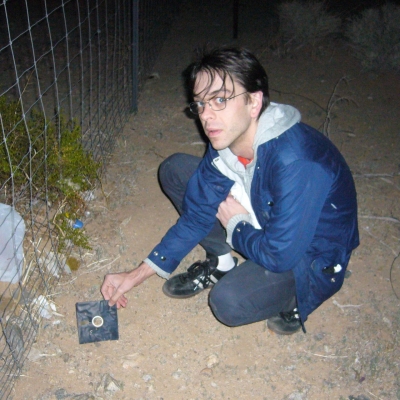Sean Mahan / Texts
Order by: date ↑ - rating ↓Most comunities have some official or unofficial structure in place for removing graffiti - but (to my knowledge) only Chicago has claimed the legal right to remove graffiti from private property. The assumption that graffiti artists are virtually impossible to hold financially accountable for removal has led to cities spending civic dollars for paint, soda blasters, etc. But the recent phenomenon of corporate graffiti adds a new twist to this structure.
The theory has always gone that a property owner has the right to allow advertising to be placed - in whatever form - on his or her building, and that this advertising is easily recognizable as such, while graffiti is easily recognized as something that no landlord has been compensated for. But what of IBM's Peace, Love, and Linux campaign of a few years ago? Locally, San Francisco fined IBM and its agencies $20,000 for the campaign. In Chicago, IBM offered to remove the stencils, but was informed by Mayor Daley that, instead, IBM would pay the city to remove them (graffiti removal being a union job). In the end, one man was sentenced to a year of supervision and 30 hours of community service, and IBM footed an $18,000 "bill" for the removal of the stencils.
The idea behind this task is that we claim the same right to remove graffiti from private buildings; and the same right to remove even "paid for" advertising. But why only focus on coporate graffiti (unless you believe the inherent evil of graffiti causes rich gangs, violence, etc)?

And on a somewhat related (to graffiti) note, did you know the panopticon has ears?
Covering your nakedness with a leaf is worth 10 bonus points in my book. Let's see more of that, players!
#!/usr/bin/php -q
< ?php
$anypending=fopen('[whatever url]',r);
while (!feof($anypending)){
$buffer = fgets($anypending, 30);
$any = $buffer;
}
fclose($anypending);
if ($any=='yes'){
$yadda= popen("br -c A -n 1",r);
}
else if ($any=='no'){
$yadda= popen("br -c A -f 1",r);
}
? >
< ?php
$c = mysql_connect([the server], [the user], [the password]);
$d =mysql_select_db([the database],$c);
$thepending=mysql_query("SELECT [the field] FROM [the table] WHERE [the field]=1",$c);
$counter=mysql_num_rows($thepending);
mysql_close($c);
if ($counter>0){
echo 'yes';
}
else {
echo 'no';
}
? >
So the Mona Lisa has been up in my don't-call-it-a-cubicle-area since Monday, and I've yet to get much in the way of any comments on it. Probably because people know how seriously I take art. It's laudable for them to not risk offending me by assuming that there is some ironic component to my displaying la gioconda, don't you think?
 Before there was drilling, there was coding. Sort of (re: Physical Representation Of A Virtual Occurrence)
Before there was drilling, there was coding. Sort of (re: Physical Representation Of A Virtual Occurrence)
How it works
A script runs every x minutes (currently, x=1) on a computer at our apartment, which checks a url that spits out either "yes" or "no". That answer comes from a script that checks the SF0 database to see if there are any tasks that are completed, but haven't yet been approved. The local computer runs a command line utility called Bottle Rocket ("br"), which is so named because it controls the FireCracker [Warning: hideous website] serial X-10 interface. Depending on whether it got a "yes" or a "now", it sends either the "on" or "off" command (respectively) to a box sitting between our an outlet and our light.
And don't give me shit about the FireCracker kit ostensibly costing $39.99. I picked it up for $6 (well, "free" + S&H) a couple years ago, when x10.com occasionally ran such a promotion. It didn't succeed in spurring me to buy an entire smarthome's worth of x10 gear, but it did end up being perfectly suited to this task...
For apparently carniverous (or what - osserous? bone eating?) deer! also, where is this?


















"lick my love pump"